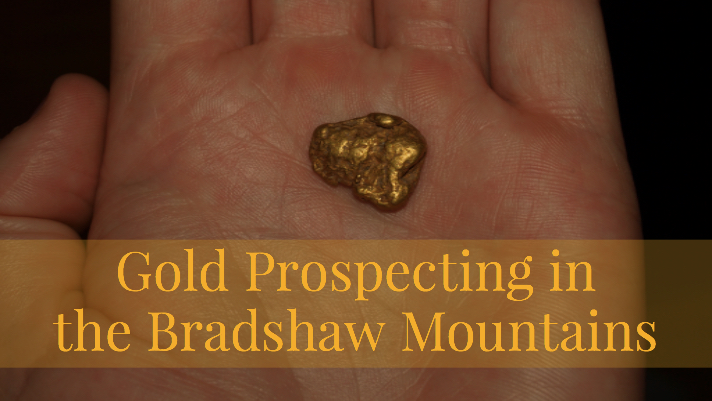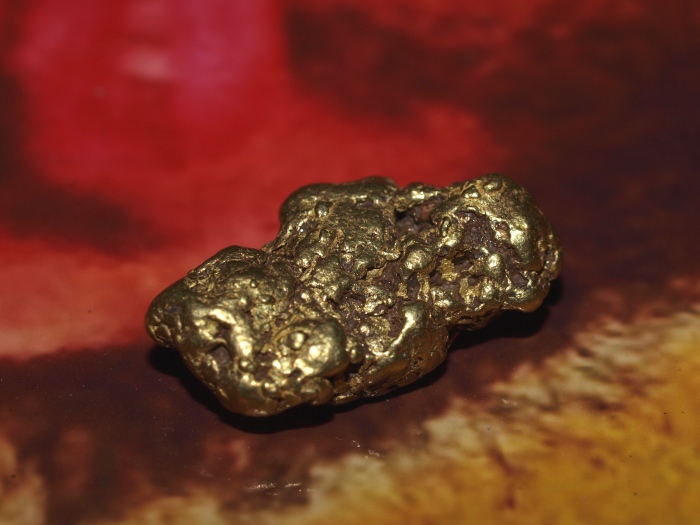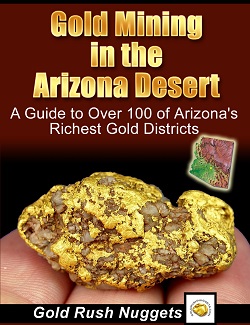
The Bradshaw Mountains are a major mountain range in central Arizona. There has been a rich and long history with regard to gold mining in the area. Even today, the place is known to have a huge potential for someone to search for gold and find it in abundance. The mountains lie within Yavapai County, with the range extending about 40 miles and the occurrence of gold is reported to cover the whole range.
Metal detecting is probably the most popular and most successful method used in locating the nuggets in the Bradshaws. Lots of gold nuggets exist in narrow, dry washes in the drain of the high county. The bedrock is often very shallow, and the nuggets are not very challenging to find as they are located within reasonable distance from the surface, thereby making metal detecting efficient.
Of course, the distribution can also be spotty in certain places. Best to focus your efforts around one of the many historic mining camps that are dotted throughout the mountains range. There are dozens of old mining towns, but many of them are long gone and it will take some research to find where to go.
Productive Areas to Find Gold
Lynx Creek
The Bradshaw Mountains have gold all throughout the range, but some areas are certainly better than others. One of the popular locations for prospecting is Lynx Creek, which was first discovered in the year 1863 by a group of miners from California led by Captain Joe Walker.
Lynx Creek covers many miles that have been removed from mineral entry, this implies that these areas have been declared free or open entry for anyone who wishes to conduct gold prospecting activities. The place is very much suitable for the use of gold pans and the sluice boxes to recover placer deposits from the creek.
Big Bug Creek
Another location recommended for gold prospecting in Bradshaw is Big Bug Creek. The gold prospecting placers on this creek were discovered in stream gravels and gravel-covered mesas in an area that was roughly triangular with an approximate extension of 20 miles east and northeast from the headwaters of Big Bug Creek right at the bottom of Mesa Mine.
Much of the placer mining operations were centered in that area of Big Bug Creek. The Creek also binds tributary gulches and gravel benches in the area of McCabe, Humboldt and Mayer, and include areas such as Eugene and Chaparral Gulches and other minor and unknown gulches.

Hassayampa River and Groom Creek
Other gold prospecting places are Hassayampa River placers. A tributary to this river is Groom Creek, an intermittent stream which flows in the southwest direction towards the point it combines with Hassayampa at a point located about five miles south of Prescott.
Moving five miles further in the south, from the point the Groom Creek joins the Hassayampa, is the place where many mines’ site was located. Such mines included the Empire, King-Kelly-Monte Cristo, Victor and Home Run Mine, which were known for rich lode god deposits production.
Placers were mainly discovered in the headwaters of the Hassayampa along Groom Creek, the Hassayampa River and the minor side gulches. Other places included the central location of Hassayampa drainage area in the vicinity of Walnut Grove and Wagoner, including the Hassayampa River, the tributaries located on the east side such as Blind Indian, Milk Minnehaha, Cherry and Oak Creeks. The Hassayampa River is known to have been mostly active between 1885 and 1890.
Other Rich Gold Deposits
Other important and worth noting locations known for gravel mining were along the upper parts and side gulches of Placerita Gulch, found near the junction of French Gulches and Placerita about one mile in the southwest direction of Zonia.
Gold mining in Bradshaw Mountains has been undertaken over a period of 150 years, and a lot of gold has been extracted in these location over the years.
Gold Detecting in the Bradshaws
The place is believed to have a lot of unrecovered gold nuggets which can be discovered by simply using a metal detector.
Be forewarned; distribution of gold in most of the parts is spotty with scattered patches.
If you are fortunate enough to find a gulch with lots of nuggets, you might want to slow it down and work the area down to bedrock with a drywasher. There might be considerable amounts of fine gold hidden in the cracks of the bedrock.
Prospecting is best during the fall, winter and spring when the weather is best. The Bradshaw Mountains are very suitable for gold prospecting during this time, but once the summer sun hits it will get too hot to wander the desert unless you go out at night.
Next: Gold in the Mojave Desert in Arizona & California

